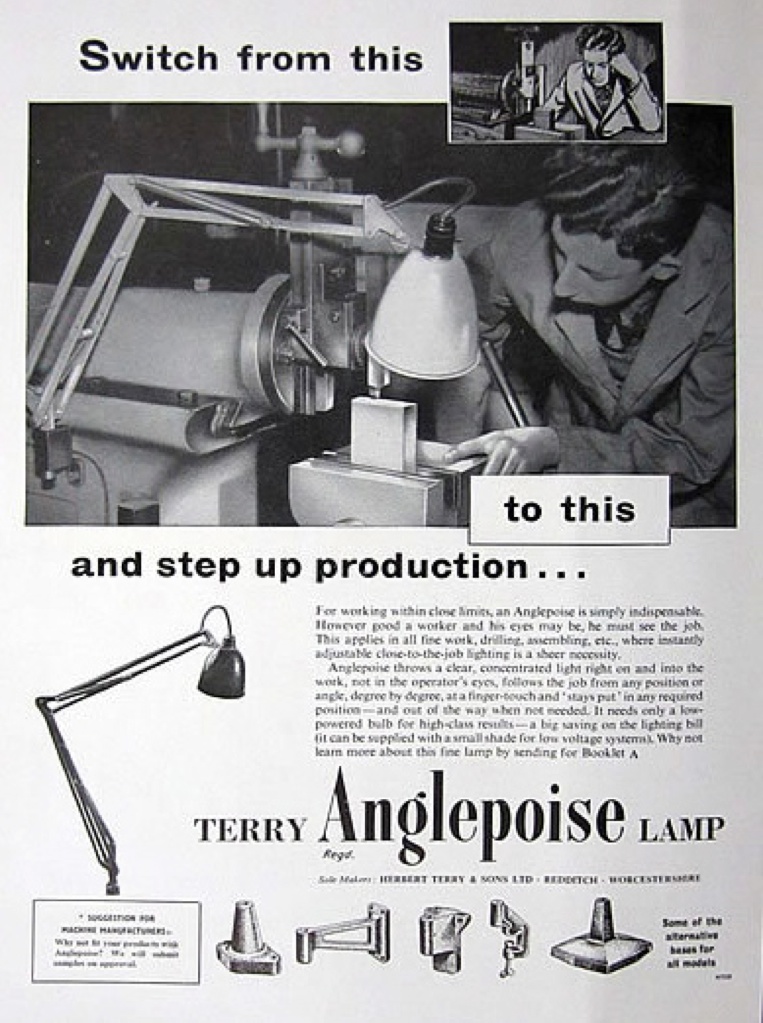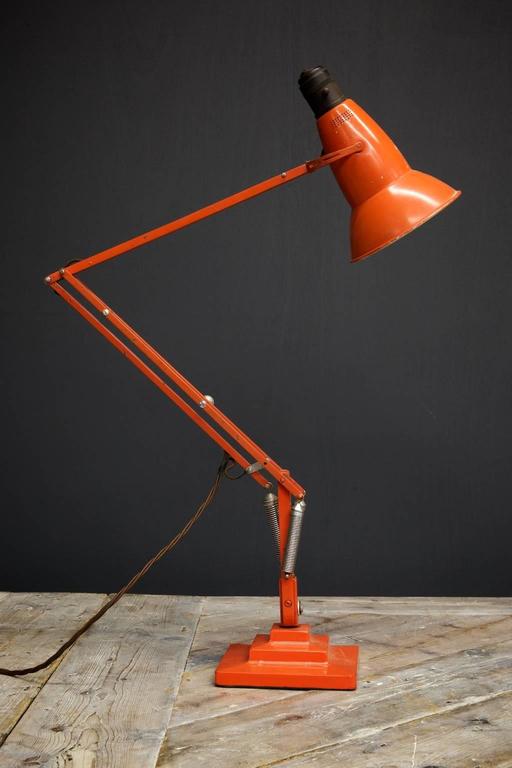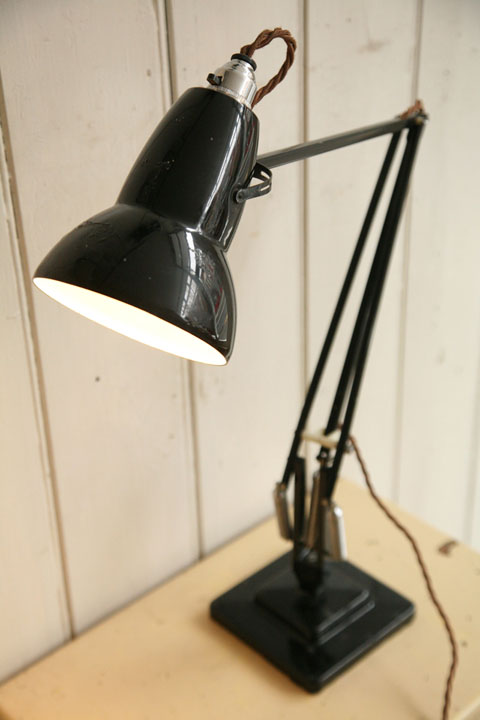There isn't a single page on the interweb that shows the basic differences between various anglepoise models. In lieu of this here is a potted guide
Equipoise lamp

ancestor of the anglepoise, with four springs, branded 'Cardine'. Terry made revised versions of this design which were known as 1208 and 1209 'anglepoise' models. An easy distinction between them are the brackets, which are quite different in the Terry versions. Most (but not all) of these lights have long arms and were most commonly found in industrial settings e.g. attached to lathes and in drawing offices etc. These models remained in production long after the 1227 model was introduced.

First three spring model (three step base) 1227 anglepoise

which (amongst other things) attracts far less dust than the four-spring models. The three springs are more nearly coilbound more of the time, have caps at the top end, and are mounted nearly vertically; all these things mean that they don't so quickly get covered in whatever crud is flying about the place and the whole thing is easier to clean.
This was replaced by a slightly simpler 1227 two-step base model (which shares hardly any parts BTW) which is far more commonly found than the three-step model.

The one above is from the 1960s and has a plastic hinge link as well as a (more easily dented) rimless shade.
and then the '75' model (~1969)

which is easily identified by the rocker switch in the shade. Then came the '90' model

which was like the 75 but used a few simpler/cheaper made parts and used a push-botton switch instead of the rocker. The push-button switch allowed a simpler one-piece shade to be used. Other simplified parts included capless springs and pressed steel fork connecting to the base.
and finally the '90 apex' model

which IMHO is the runt of the litter; there are too many plastic parts at the most highly stressed parts of the arm; these lamps break too often.
There were innumerable variations on these basic designs with long arms, short arms, different bases/brackets/stands, different materials and finishes. Probably enough variation to be able to write a good-sized book about it. There are also reissues of older lamp designs; however with the exception of the 'giant 1227' model you are buying a Chinese-made lamp these days if you buy new (or new-ish).
I got a model 90 as a birthday present in the 1970s and despite its obvious quality and brilliant design (I think it was an exhibit in the design centre London at the time) I think it cost less than fifteen quid. They had made parts of this light cheaper than the previous 75 model but the only part of mine that failed was the star washer holding the base on. I have used this lamp every day for about forty years and it is still good! The '90 apex' model afterwards was made a lot cheaper and these are so horrible I won't have one in the house.
I also have a model 75 (weirdly on a two-step base) and a couple of two-step 1227s.
cheers